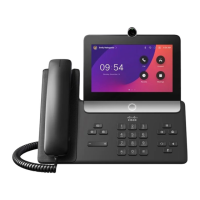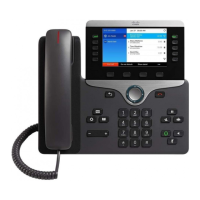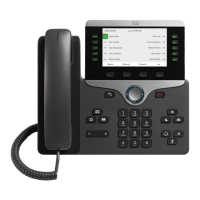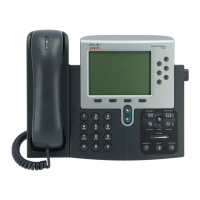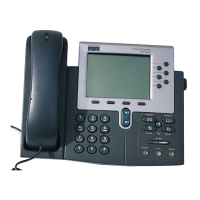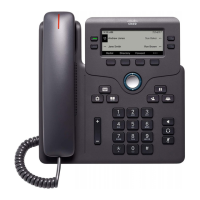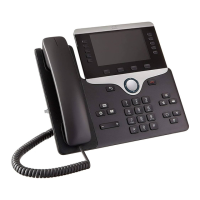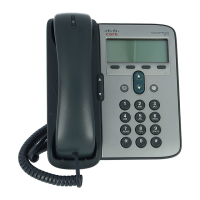• Be sure that voice and call control packets have the proper QoS markings and other protocols are not using the same
QoS markings.
• Enable Differentiated Services Code Point (DSCP) preservation on the Cisco IOS switch.
For more information about TCP and UDP ports used by the Cisco IP Phone 8861 and 8865 and the Cisco Unified
Communications Manager, refer to the Cisco Unified Communications Manager TCP and UDP Port Usage document at this
URL:
http://www.cisco.com/c/en/us/td/docs/voice_ip_comm/cucm/port/10_0_1/CUCM_BK_T537717B_00_tcp-port-usage-guide-
100.html
Call Admission Control (CAC)
Call Admission Control can be enabled on the access point.
• Enable Call Admission Control (CAC) / Wi-Fi MultiMedia Traffic Specifications (TSPEC) for Voice
• Set the desired maximum RF bandwidth that is allocated for voice traffic (default = 75%)
• Set the bandwidth that is reserved for roaming voice clients (default = 6%)
The Cisco IP Phone 8861 and 8865 will specify 12 Mbps for the PHY rate to be used for TSPEC.
Pre-Call Admission Control
If Call Admission Control is enabled on the access point, the Cisco IP Phone 8861 and 8865 will send an Add Traffic Stream
(ADDTS) to the access point to request bandwidth in order to place or receive a call.
If the AP sends an ADDTS successful message then the Cisco IP Phone 8861 or 8865 establishes the call.
If the access point rejects the call and the Cisco IP Phone 8861 or 8865 has no other access point to roam to, then the phone will
display Network Busy.
If the admission is refused for an inbound call there is no messaging from the Cisco IP Phone 8861 or 8865 to inform the
remote endpoint that there is insufficient bandwidth to establish the call, so the call can continue to ring out within the system
until the remote user terminates the call.
Roaming Admission Control
During a call, the Cisco IP Phone 8861 and 8865 measure Received Signal Strength Indicator (RSSI) and Packet Error Rate
(PER) values for the current and all available access points to make roaming decisions.
If the original access point where the call was established had Call Admission Control enabled, then the Cisco IP Phone 8861
and 8865 will send an ADDTS request during the roam to the new access point, which embedded in the reassociation request
frame.
Traffic Classification (TCLAS)
Traffic Classification (TCLAS) helps to ensure that the access point properly classifies voice packets.
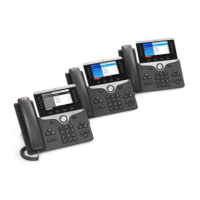
